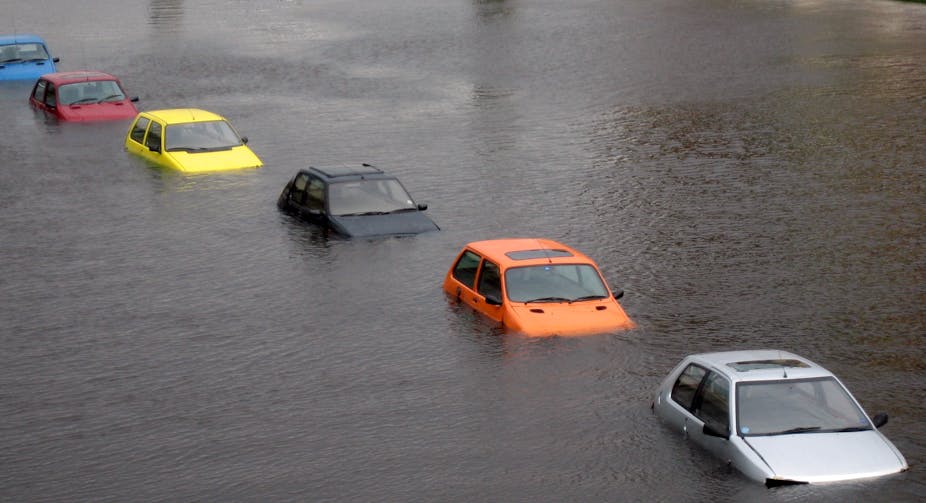From the isolation of entire villages in the flood-hit Somerset Levels to coastal rail tracks falling into the sea at Dawlish in Devon, the economic, social and emotional damage to those hit by extreme weather is likely to be severe and far-reaching.
But stormy weather will strike again – perhaps even more frequently and intensely.
The effects of extreme weather and storms are part of the natural course of the evolution of coastlines. We should expect that cliffs will retreat, estuaries and low-lying rivers will silt up, and beach ridges of sand and shingle will move.
We may intervene to try slow this process, but such efforts come with a high price, both economically and socially. Nobody wants to see communities suffering because of flooding. But decisions taken during emergencies are often only remediation, short-term solutions which attend only to immediate needs. These include dredging rivers, improving pumping stations, piling on sandbags or adding rocks or concrete as coastal defence. But these will not prevent coastal erosion or flooding in the future.
Flooding in the future
Flooding is the most frequently occurring and damaging natural hazard worldwide. In 2010, it affected 178m people and caused losses exceeding US$40 billion. While the risk of death from flooding has declined over the last two decades, the exposure of people and economic assets to natural hazards is increasing.
In the UK, for example, more than 2m properties were estimated to be at risk from flooding in 2004. In 2009, the Environment Agency estimated that 5.2m properties were at risk from flooding in England alone. This increase is due to both increased occupation of flood-prone areas and improved risk assessment methods.
Climate change and poor urban planning are likely to increase flood risk in the future. The first by affecting local rainfall patterns and enhancing the potential for extreme weather events, and the latter by placing people and critical infrastructure in areas prone to flooding and erosion.
Policies have been implemented to regulate how development takes place in flood risk areas, but with an unrelenting pressure for an increase in housing, local authorities are often more keen to build than they are to reduce flood risk. In light of climate change and the predictions of further bad weather, it’s time to rethink priorities and consider the long-term consequences of planning decisions.
Living with the consequences
Flood defences are in urgent need of upgrading to cope with urban development, higher sea levels and more frequent and intense extreme weather. But irrespective of how much money is spent, it is impossible to protect everyone at all times in high-risk areas.
If you don’t want to be at risk from flooding, you should start thinking about moving out from the floodplain or low-lying coastal areas. If you don’t want to be affected by cliff retreat, you should move away from the cliff top. The ultimate consequence of climate change to society is that we cannot continue living the way we did in the past.
If you live in an environment that is changing, you need to adapt to these conditions and adopt measures that will make you more resilient. This inevitably involves changing attitudes and taking responsibility for the way we live.
Many will blame climate change for the extreme events, and the government for not doing enough to reduce the extent and impact of flooding. But most of us will not consider what each one of us can do to become more resilient to the impact of similar, or more intense, weather in the future.
Unfortunately, we only question what could have been done better or differently during major crises. This distorts the debate and clouds the real issues, more often than not leading to rushed decisions and ineffective, short-term emergency works.
Human interventions have changed our coasts, rivers and landscape immensely and these impacts are far more significant than what can be attributed to climate change. You can blame the government for development in flood plains and high-risk coastal areas, but ultimately where you live is your decision.

